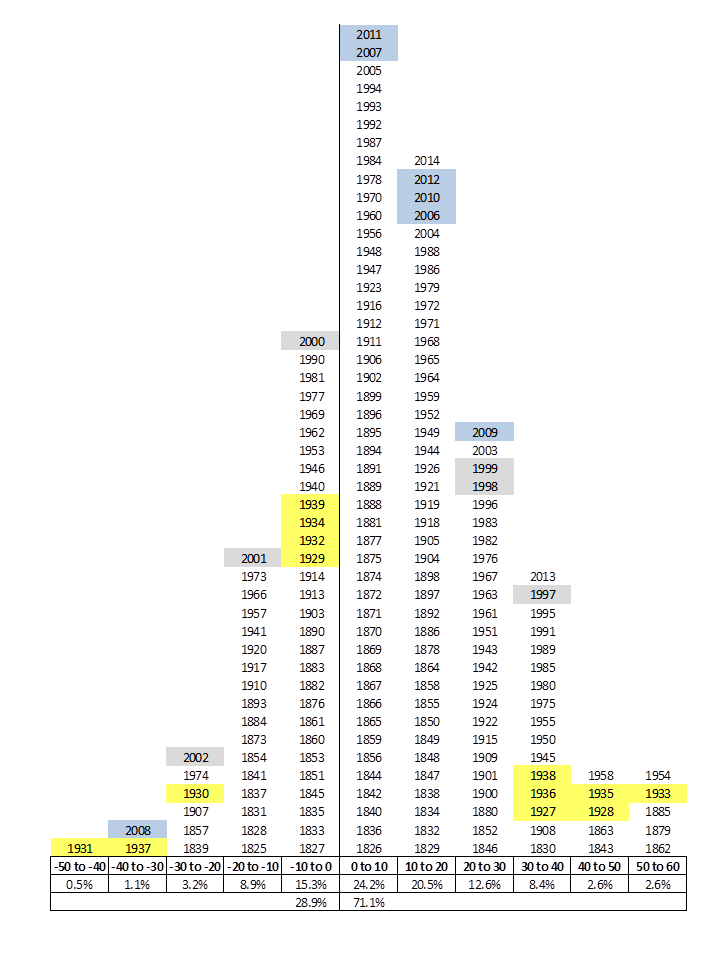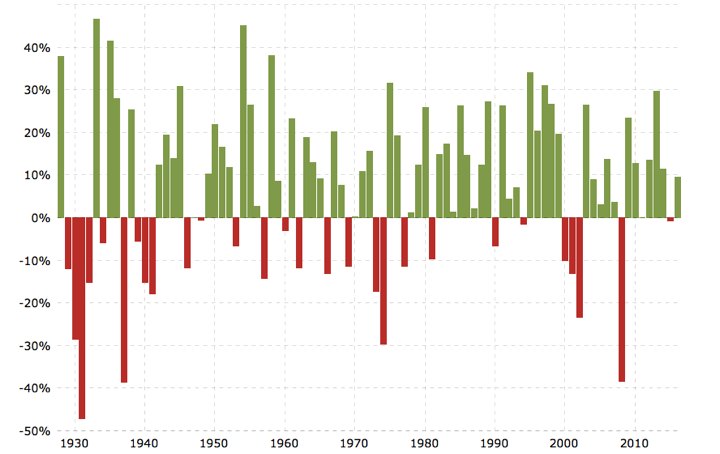 As we stand today in early 2017, the performance of the US stock market since 2009 has been pretty impressive with only a few minor hiccups. I am not calling a market drop, but the best time to prepare is before an emergency or crisis occurs. Humans have a well-documented loss-aversion bias. We react to losing money much more severely than positive returns. Therefore, it is wise to remember that historically, the annual return of the S&P 500 index is negative approximately 1 out of every 3 years.
As we stand today in early 2017, the performance of the US stock market since 2009 has been pretty impressive with only a few minor hiccups. I am not calling a market drop, but the best time to prepare is before an emergency or crisis occurs. Humans have a well-documented loss-aversion bias. We react to losing money much more severely than positive returns. Therefore, it is wise to remember that historically, the annual return of the S&P 500 index is negative approximately 1 out of every 3 years.
Here’s a histogram that organizes into “buckets” the historical annual returns of the S&P 500 Index* from 1825-2014. We see that negative returns occurred 29% of the time. Legend: DotCom bubble (grey), Great Depression (yellow), Housing bubble (blue). Source: Margin of Safety.

(* For periods before the S&P 500 existed, the S&P Market Index is used. Before that, I have no idea!)
Here’s a similar chart that shows the annual percentage change of the S&P 500 index from 1927-2016. I counted that 28 out of 89 periods were negative (31.4%). Source: Macrotrends.

We should expect and accept that negative returns will come 1/3rd of the time. The drops are part of the package. Just like having a hurricane, tornado, or earthquake preparedness plan, you should have a market drop plan. Do you have a cash cushion so you don’t feel the need to sell temporarily-depressed shares? Do you have a high-quality bond or cash allocation that you can use to rebalance and buy even more stocks when they reach lower valuations?
 The Best Credit Card Bonus Offers – 2025
The Best Credit Card Bonus Offers – 2025 Big List of Free Stocks from Brokerage Apps
Big List of Free Stocks from Brokerage Apps Best Interest Rates on Cash - 2025
Best Interest Rates on Cash - 2025 Free Credit Scores x 3 + Free Credit Monitoring
Free Credit Scores x 3 + Free Credit Monitoring Best No Fee 0% APR Balance Transfer Offers
Best No Fee 0% APR Balance Transfer Offers Little-Known Cellular Data Plans That Can Save Big Money
Little-Known Cellular Data Plans That Can Save Big Money How To Haggle Your Cable or Direct TV Bill
How To Haggle Your Cable or Direct TV Bill Big List of Free Consumer Data Reports (Credit, Rent, Work)
Big List of Free Consumer Data Reports (Credit, Rent, Work)
The Shiller P/E ratio looks scary these days, but with such low interest rates worldwide, history may not be a useful guide.